The Way It Is/ Acura's ARX-02a LMP1 car
by Gordon Kirby This year's Sebring 12 hours on March 21 looks like being the most interesting race in the United States this year with three new sports cars making their race debuts on the bumpy old Florida airfield circuit. Audi and Peugeot will make their only American starts of the year--Audi with its secret new R-15--using Sebring as a full-on test for June's Le Mans 24 hours. Also the Audi and Peugeot teams and drivers will race for the first and only time this year against the all-new Acura ARX-02a LMP1 cars run by Gil de Ferran's team and Duncan Dayton's Highcroft Racing as well as Rob Dyson's equally new pair of Lola-Mazda LMP2 machines.
This year's Sebring 12 hours on March 21 looks like being the most interesting race in the United States this year with three new sports cars making their race debuts on the bumpy old Florida airfield circuit. Audi and Peugeot will make their only American starts of the year--Audi with its secret new R-15--using Sebring as a full-on test for June's Le Mans 24 hours. Also the Audi and Peugeot teams and drivers will race for the first and only time this year against the all-new Acura ARX-02a LMP1 cars run by Gil de Ferran's team and Duncan Dayton's Highcroft Racing as well as Rob Dyson's equally new pair of Lola-Mazda LMP2 machines.
The two Acuras and one of Dyson's Lola-Mazdas ran publicly for the first time at Sebring last week. Dyson's car was brand new, unpainted and untested, while the Acuras have been testing for the best part of two months. The Lola is a svelte, closed cockpit car and ran well on its first time out last week. The new Lola-Mazda combination should prove light and nimble in the best tradition of the P2 class and I'm sure it will be very effective over the course of the year in Dyson's capable hands.
Meanwhile, the new Acuras stole the show at last week's ALMS winter test and this week I'm going to take a close look at the ARX-02a. The car showed competitive speed at Sebring but it remains to be seen if the Acura teams and designer/builder Wirth Research can achieve the high level of reliability required to win in the car's debut in the 12 hours in March. De Ferran and Dayton have assembled a pair of excellent teams filled with experienced old hands. Nor could you ask for better driving teams with Scott Dixon joining de Ferran and Simon Pagenaud for Sebring and Dario Franchitti partnering Highcroft's regular drivers David Brabham and Scott Sharp in the 12-hour grind.
"Our goal this year is to win the P1 and P2 championships and, of course, to win here at Sebring at the start of the season," commented HPD's boss Erik Berkman. "We have no plans at this time," he added, "to race at Le Mans."
The Acura brand is not sold in Europe, of course, so any decision about the ARX-02a racing at Le Mans appears to depend on Honda developing a plan to sell cars in Europe as well as how the evolution of the ACO's P1 rules for Le Mans take shape over the next few years.
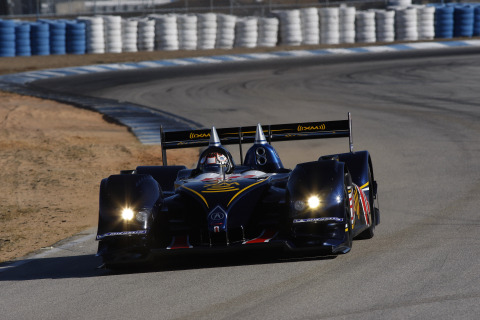
© LAT USA
"The challenge was how do we take a car with a normally-aspirated engine and compete with a diesel car?" commented designer Wirth. "We all saw during 2008 the diesel cars had a huge advantage over any of their gasoline-powered rivals at Le Mans and in the American and European Le Mans series. Audi's engine group confirmed that the diesel's extra speed really came from the power delivery and the power of the engine, not from the chassis.
"So we've had to look at how do we exploit the advantages we have in a small, efficient, gasoline engine and try and overcome the advantage of these big diesel engines and create a really special car. We've already seen in the ALMS in 2007 and 2008 that small, light and nimble cars can compete. We saw some classic battles between Porsche and Audi in 2007 and some classic battles between Porsche, Audi and Acura in 2008. So the goal of this program was to try and create the fastest and most agile P1 car that's been built and also try and find a fundamental advantage that would offset the diesel's raw power."
In my blog at Motor Sport's website last week Wirth explained his concept of getting more rubber on the road and increasing the overall contact patch area by up to ten percent. The big front tires make the car look like a 4WD machine. They allow more weight to be brought forward so that the car enjoys close to a 50/50 weight balance. Loads on the Acura's front tires are much bigger than normal, requiring the complicated power-assisted steering system, but the drivers report the car is still physically difficult to drive.
"One of the first things that jumped out the first time I drove the car is that it has a lot of grip in the corners and under braking," de Ferran commented. "Our biggest challenge so far has been how to make the best use of the grip.
"Making the decision to have the same size tires all-round has unearthed a whole lot of engineering problems and challenges that didn't previously exist," de Ferran continued. "One of them is the steering system because the loads are huge. Together with all the HPD engineers, they have developed probably one of the most complex and sophisticated power systems and that's very much an item that is on a very steep development curve. When it's working well, it works well.
"From a driver's standpoint there's a lot that you need to adapt to and understand the feel. We're trying to create what could arguably be called the best-handling sports car ever made. Whether we actually accomplish that or not, I don't know, but that's the idea.
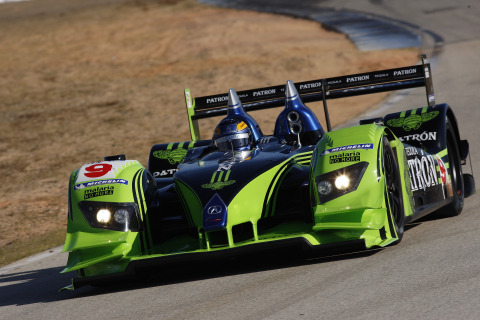
© LAT USA
Another trade-off with the big front wheels and tires is that they rob the Acura of front downforce so that Wirth's group spent many hours of CFD time developing the car's aero package in an effort to mitigate these losses.
"The thing about any tire--road car tires and racing car tires behave in two domains," Wirth explained. "They're very load sensitive and camber sensitive and sensitive to how much slip is going on. The basic difference between a road car tire and a race car tire is that the race car tire operates and is very sensitive to the thermal domain. You can't ignore that and you do so at your peril."
Wirth points out how frequently we hear people complaining in F1 and other racing series about their struggles to get their tires up to temperature.
"You know what?" Wirth remarked. "It's not a case of if only you could get the tire temperature. It's a case of understanding and using the tires properly. We were very concerned about that. We felt we suffered in 2007 with our P2 car relative to the Porsche. Once they responded to our initial arrival on the scene they did a good job of developing their car."
Wirth says one of the primary reasons the Acura P2 cars improved their performance in 2008 was a result of working with Michelin to get the tires back to operating temperature after restarts in the wake of typically long ALMS full-course yellows.
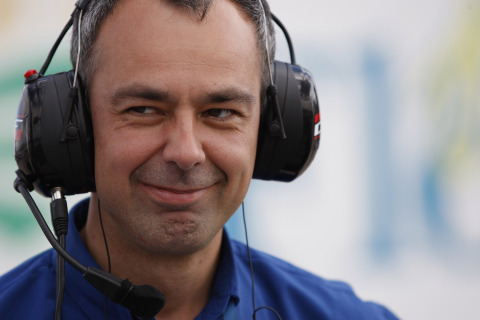
© LAT USA
Wirth adds that his solution to gaining more grip with the new P1 car complicated the issue of quickly regaining tire temperatures after full-course yellows.
"The P1 rear tire is a huge racing tire," Wirth observed. "The wheel and the tire is a gigantic piece. If you put a P1 rear wheel and tire next to a P2 front tire, it's like a beast. There are kilograms of extra mass of construction of rubber and wheel, too. We knew there was a performance plus to have, but if we did it and it took two laps longer to heat the tires up then you can kiss the race good-bye. If you find yourself thirty seconds down and there's thirty laps to go you've got to be a second a lap quicker.
"One of the things that's been so fascinating about this project is the management of all those other variables and to try and end up with something where we're not looking too bad. Like anything in life, it's never black and white. You have to trade all these parameters off and that's probably what's made it so fascinating."
The ARX-02a was designed in partnership with Michelin using Wirth Research's full-size, real-time simulator.
"There's no doubt that our involvement with such a wonderful technical partner as Michelin has been great," Wirth remarked. "We've been very public in our use of the real-time simulator. It's used on this program and used by other of our customers as well. It is an amazing piece of equipment and when we announced its presence to Michelin they said they thought they had left all these toys behind when they left Formula 1.
"In Formula 1 it was mainly used for choosing different tire compounds and other pre-race decisions. But we used this tool for the fundamental design of an all-new vehicle, radically different in many respects to anything out there. We were off the scale on the bravery meter and Michelin used their technology which fitted in very well with ours to do this. It was all an experiment and, as an engineer, that is a wonderful thing."
Wirth also tips his cap to Acura for having the courage to tackle something new. "To work with a company like Acura where the management have got the vision to say, 'You know what? We've got to try.' Trying is part of Acura and Honda's DNA going right the way back to the founder. And that's right up our street. We've got to try. We may fail, but those who are scared of failure will never succeed. So it's great to be involved with Acura and Honda."
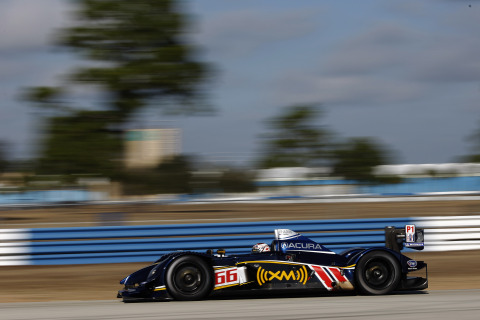
© LAT USA
"We were very, very aware of the inherent reliability issues that would bring with it," Wirth commented. "There are certain reasons why in the future it might be advantageous to have hydraulics on the engine for other engine-related functions you're allowed to do in P1 that you're not allowed to do in P2. So it was a longterm goal that we needed to look at but certainly there were some packaging aspects to do with the monocoque which meant it was an optimum solution.
"All of us--HPD, Acura and ourselves--went into it knowing that we might end up halfway through Sebring regretting that we have hydraulics on the car. It was extremely complicated from the start and we've certainly found it's a very big challenge. The supply of hydraulics and keeping that supply all through the race under all circumstances is quite a challenge and continues to be a challenge. It's my fervent hope that we get on top of it before the race at Sebring. We certainly seem to be turning the corner on it, but it was a known and calculated risk to do that."
The car is fitted with a six-speed gearbox built by Wirth's group with Xtrac internals. The transmission looks stout and substantial rather than small and svelte.
"It feels very nice," de Ferran remarked. "Much nicer than what we had before. The shifts are very quick."
Commented Wirth: "We're trying to achieve certain targets of weight distribution and you want to get the engine as close to the center of gravity as you can because then you have the lowest polar moment of inertia. You also structurally want to integrate it pretty well into the monocoque. Then you've got a certain rear axle position and you've got to get the power from the engine to the rear axle.
"At the end of the day the transmission is a structural element. It is integral in defining the vehicle's stiffness in all planes and axes. So it's that size because it needs to be. If we made it the size of a Formula 1 case in cross-section it wouldn't achieve the mechanical properties that we needed it to achieve in other respects.
"We focused quite early on what we needed to do mechanically. We went through a process of redesigning the transmission for the P2 car between 2007 and 2008. We used the same Hewland internals from when we purchased the Courage and ran the Lola. We had a number of issues with them like you do all gearboxes but we have great respect for Hewland. Apart from one notable exception at Salt Lake we didn't have any gearbox failures in 2007. But there were no real issues with the gearbox and because of the inventory we decided to carry that transmission over into 2008.
"We wanted to optimize the P2 car in 2008 so we did an all-new bellhousing designed in-house. It was a step towards the P1 transmission. We used the same internals that were already designed and we did a new gearbox case, but we did it with a very limited budget. We were very much trying to keep the philosophy that the ACO had for P2 which is it's a customer formula and we don't want unobtainium this or that. But it was equally the case that we needed to raise the performance level of every part of the car.
"The fact of the matter is the gearbox is at one end of the vehicle and is mounted quite a long way from the center of gravity. A gearbox has an inherent center of gravity by itself. So the mass of the gearbox and the structural aspects of the gearbox not only affect the structural aspects of the car but also its inherent mass, both in terms of its physical weight and also its rotating inertia and the internal losses associated with how much power you put in versus how much power you get out. All of those aspects are primary variables which affect the performance of the car. There were only a certain number of knobs that were available to us to make the car fast and that was one of them we had to optimize."
Wirth pointed out that the P1 transmission wasn't restricted on cost like the P2 transmission development.
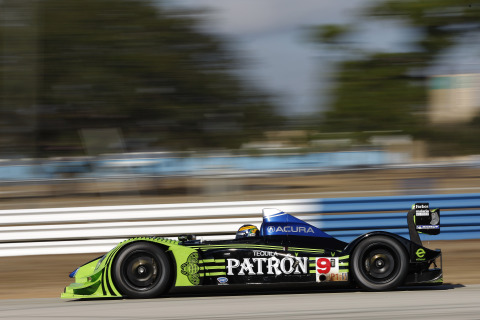
© LAT USA
"We identified very early and very clearly that the gearbox is a very big lump in the car and we had to do a very good job on this. I'm very proud that we took on the design and integrated it into our virtual engineering systems. There were certain of aspects of key technologies we could get by working with Xtrac. They had developed this technology for other formula and had experience which we wanted to deploy in this gearbox. We had no reason to change on the face of it, but it was appropriate for us to make the next step up in technology with Xtrac.
"It's an all-new transmission. We've had issues with it and Xtrac has stepped up and fixed those issues, and it's been pretty good since then. So were very happy with that decision."
Added Wirth about the specific demands of Sebring: "The loads that we see at this race are among the highest. Certainly the frequency of the loads are the highest. But you get some pretty big loads at Mosport and Elkhart Lake too."
Wirth is proud of the technology incorporated into the ARX-02a which has been delivered at a fraction the cost of a modern F1 car.
"This car has the same technology on it, apart from carbon suspension, as a Formula 1 car," Wirth commented. "F1, rightly or wrongly, is held up as the pinnacle of race car engineering with six hundred people involved in designing and building the cars. We did this car with a twentieth of that number of people and a twentieth, or even a fiftieth, of an F1 budget. Relatively, it was a tiny amount of money, and to do that and bring it here to Sebring and not have it completely disintegrate is a great testament to the amount of effort everybody put in.
"Everyone all 'round has stepped up and done a great job. The aero guys and the simulation guys who designed the transmission and the monocoque, and the guys who designed and built the metal matrix uprights. It's a wonderful piece of technology and it's just been great to see the dedication and focus on the job. We've tried to deploy the resources as best we can.
"When you build an all-new car like this and that car debuts three weeks after your last race of the season where you've been in this massive fight with Porsche, developing the car tooth and nail to the last moment with new developments for every race, inevitably you have to compromise. So that compelled us to concentrate on the things that really matter.
"There were less important things we had to hope would be okay and I'm surprised that some of the less important things prevented us from doing as much running as we'd like to in November. But we gradually fixed those issues and now we're starting to really rack-up some miles. Now it's a race against time. It's about resource-balancing. If we hadn't had to fight with Porsche last year and win all the races we won we would have more resources for this project."
Wirth Research employs forty people while a second company called Digital Flow Solutions employs nine engineers.
"Digital Flow Solutions is a CFD company which does all the aerodynamics," Wirth explained. "We have guys developing the software and the techniques which have enabled us to take the bold lead with have in that area. All the development of the LMP2 car was done in CFD and I think that's a world first in terms of competitive race cars. To be able to win races and develop the car at the rate we did is something we're very proud of.
"Wirth Research is split into the manufacturing and procurement side so we have our own in-house composite facility where we make the structural pieces--the monocoque, the nose, the rear wing system and the quillers on the rear wing. All of that is designed and manufactured in-house and that's a first for us. Because of the level of technology that's in the monocoque we really wanted to keep that intellectual property within the company. We have five or six people working on that side--very small, very compact.
"We also have five or six people working on procurement, sales, parts supply, logistics, stores, etc. We have three people working in administration and finance and really the rest is R&D and engineering. We have an amazing array of talent from all aspects of motor racing and we're actively involved in bringing on the next young generation of engineers straight out of college."
Wirth described his company's working philosophy.
"I have a simple mantra in life and I said it and meant it all the way through the program. The core philosophy of Wirth Research and Digital Flow Solutions is you are talented and creative and gifted people who are capable of doing a wonderful job. We love winning. It's what it's all about. But all you've got to do is look yourself in the mirror and say, did we do everything we could? We got to the end of the season last year and we won six races to five for Porsche but we lost the championship by one point. We needed to come one-two-three at the last race the Petit Le Mans which was unfortunately a demolition derby.
"But nevertheless, we are so proud of what we did last year as a group because we knew there was nothing else we could have done as an engineering group. There was no, 'if only'. I hate the, 'if only'. I just want to get to the point at Sebring where, succeed or fail, we did everything we could and worked as hard as we could and were diligent. And we never said, 'I can't do this,' or, 'It'll be alright'. That's the philosophy of the company and I hope it'll bear fruit."
Meanwhile, Acura and Honda hope some major manufacturers return to or join the ALMS in the coming years. The loss of Audi's P1 cars and Porsche's P2 Spyders has dealt the series a blow both in on-track competition and marketing and promotional power. This year's Sebring 12 hours should be a great race but the rest of the ALMS season featuring Acura versus Mazda is sure to be a bit of a let-down.
"It's going to be a challenge for all of us and we of course hope that manufacturers will come to this series," commented HPD's Berkman. "We'd like to see Audi come back and new manufacturers as well."
Here's hoping a major manufacturer or two decides to respond to Acura's exciting new LMP1 car. The ALMS and American motor racing as whole desperately need such a blessing.
Auto Racing ~ Gordon Kirby
Copyright 2009 ~ All Rights Reserved
Copyright 2009 ~ All Rights Reserved
Top of Page